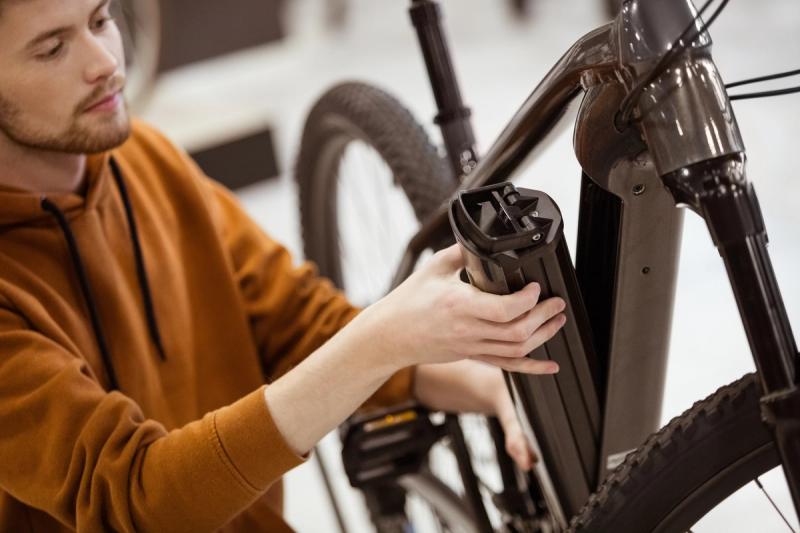I fail to understand why we have to restrict an amazing new technology to the degree where it impacts its utility instead of enforcing instances of it’s misuse. What’s so hard about putting two officers sitting on a bench next to a trail writing warnings for overtaking without a bell or going faster than 20mph on a shared use trail. Car engine size isn’t restricted, why should we cripple bikes. Also, big cargo bikes need extra big motors just to lumber along.
I kinda agree but you don’t need to pass examination to ride a bike and don’t have liability insurance.
Fair point. I wonder if they could do something like “x volts or less” OR “governed at x mph” rather then both. This would allow say a 20 mph cargobike with a powerful engine, while not allowing 150lb fatbikes going 40 down the trail. At the same time, light bikes that have low voltage motors can enjoy mild assist up to speeds they would otherwise be able to achieve with muscle power alone by peddling on a slight grade.
My main bike is a 35-40lb ebike with a 250v motor. It’s class 3, so it cuts out at 30mph, but because its so light and the assist is so mild, it fits better with bikes than motorcycles. Peddling on flat ground, you’re lucky to get it to 20 without buns of steel. It’s much lighter and less assisted than even a run of the mill ebike, but it’s not legal to ride on most paths.
Having said that, I ring my bell whenever I pass someone and I limit my speed on multi-use paths. I’m not causing problems, but the proposed solution impacts riders like me. I think ebikes will continue to have grey zones in my area because we have excellent grade seperated multi use paths, but riding in the street is like taking your Fisher Price tricycle to the destruction derby.
The point about the insurance is valid though. Personally, mine is insured as an “electric motorcycle” for about $100/yr. with liability, collision, and theft. I’ve thankfully never had to use it. I certainly think I’m an outlier for insuring my bike.
The answer is Amsterdam in the early 2000s when 50cc scooters completely took over the bike infrastructure and created absolute havok on the way pedestrians and cyclists interacted. People were literally getting run over in a daily basis because the infrastructure was designed to isolate bikes from cars, not pedestrians. And that’s in a place where actual thought was out into cycling.
In most of the world, people on bikes already recklessly ride around in the sideways, so waves of people going 30mph, running into crowds of pedestrians is a formula for disaster.
250W is a pretty sad limit if you ask me, glad I don’t live in the UK (for lots of reasons)
You can have more than 250W right now, as well as removing the pedal requirement. It just becomes an electric moped.
Bikes are a special class. They are generally light enough and slow enough to avoid a lot of the problems with cars etc. Because of this, they have far less regulation overhead.
Ebikes are a branch off from this. They are slightly heavier, slightly faster, but not so much that they cause problems. A faster, heavier ebike would become more dangerous and so need more regulation.
Instead of expanding the ebike category, they should create a “low powered moped” category. They could also put escooters into it. More safety rules than a current ebike, but less than a full moped, or motorbike. E.g. intended for road use, allowed to use cycle paths and footpaths, but with a low speed limit. They could also require a numberplate equivalent, but self certify the MOT and no road tax.
Restrictions on speed are a lot more reasonable than restrictions on wattage. For example, WTF is a loaded-down cargo bike supposed to do with only 250W when it gets to a hill?
I’m not sure if 250W makes sense or any other particular rule, but it wort weight matters too. If a loaded-down cargo bike hits a pedestrian it’s going to hurt a lot more than a road bike collision even at the same speed
Lower gear and pedal harder? A cargo bike could easily out mass a moped. Having one collide with a pedestrian would not end well. A power limit is easy to enforce, a speed limit is harder. Particularly when it applies to all ebikes.
Remember, I’m not saying they shouldn’t exist, just that they need to be regulated differently than smaller ebikes, and pedal bikes.
My 750W ebike is restricted to 20mph (which I think is a good limit) and 1000W would still be useful for going more than 3mph up some of the hills here and I’m not even carrying much of a load (much lighter than the backpack I carried around in middle school - well, I’m on the bike and I’m overweight). And because of how heavy and how much rolling resistance it has due to larger tires, its slower than my acoustic bike at speed: I can only get my ebike up to ~28mph on flats and I can’t maintain that for any useful amount of distance (well, long enough to make it to a light in time occasionally). Of course the ebike makes frequent acceleration easier. Which means I slow down more when passing people on an ebike than an acoustic bike, where I’d have to get sweatier on my way to work to slow down for them.
Maybe I just need to be banned from riding acoustic bikes because I’m heavy and go fast?
Pictured: An Acoustic Bike

Whatever the fuck that means.
There’s a power/amp cord in that photo, clearly not acoustic. /S
It’s the best real live photo I could find. Fuck AI
A bike without electric assist.
Oh you mean Bicycle. The word we’ve had for over 150 years…
Ebikes are also bicycles. They just have assistance. Sometimes language gets updated to account for new technology.
“Acoustic” is just not an adjective that makes any kind of sense whatsoever…if you want to modify the language to better describe what you’re talking about, at least pick words that make sense.
The fact that you already used the work Ebike to mean electronic bicycle means we’ve already agreed on a naming convention.
1000W is the low end power output of a moped engine. At that point UK law gets quite clear on the requirements for use on a UK road.
My concern is, after a few accidents make the news, the government will have a knee jerk reaction against all ebikes. A middle ground between 250W ebikes and mopeds would take the risk off of all ebikes being regulated to death. It allows for slightly more regulations on more powerful bikes e.g. speed restrictors.
It’s a “this is why we can’t have nice things” issue. People tearing down sidewalks on bikes are already a huge issue. People need to understand that the accessibility of these devices, combined with poorly implemented infrastructure, is the entire problem. Yes, all bikes on crowded sidewalks are dangerous, but the relative accessibility of ebikes means instead of a few assholes weaving in and out of pedestrians, you suddenly have dozens of them. It’s not about speed, it’s about the number of idiots doing something idiotic.
If you actually make an effort to separate pedestrians from cyclists, it’s less of a problem, and growth of ebikes is a great development. But ebikes displacing and menacing pedestrians is not ok.
You’re acting like they’re saying larger, higher powered vehicles shouldn’t exist, instead of “that’s very obviously not a bike and shouldn’t be able to co-opt the label in a way that damages actual bikes”.
Yeah, more powerful ebikes are really already in the moped category and should be treated as such. Though obviously powerful ebike is most of the time better option
Also the pedaling requirement is literally what makes it electric bicycle
A trained cyclist can produce 400W, it’s literally less than a human…
Hell, we allow people to ride horses on the road without a license or MOT, and they can produce >10000W.
Personally I actually agree that throttles don’t belong on e-bikes. However 250 does seem pretty low to me at least compared to the e-bikes we have here in the US.
From a California perspective, our Class 2 category allows for throttle-controlled ebikes, and these appear to be rather popular, in part because the pedal-assist feature of a Class 1 ebike is almost-always included in a Class 2 throttle ebike. But also – I’m speculating – that consumers like having the throttle as a backup: imagine a rider that pedals to their destination but leaves while tired and just wants to get home.
This isn’t a misplaced want, and it’s roughly analogous to the “everything car” that Americans desire but can never truly have: something that’s good for all scenarios.
A new development – and one which the legislation is only beginning to provide clarity for – is multi-class ebikes, allowing the bike to operate under different class regimes at different times. For example, an ebike which is speed limited to 20 mph (32 kph) when using the throttle but raises to 28 mph (45 kph) when pedal-driven. This would be a combination of Class 2 and Class 3, respectively.
I personally prefer at least 500 W on an ebike, which is approximately enough to hold 18 mph (30 kph) while climbing overpasses at freeway interchanges: these non-places are pedestrian and cyclist hellscapes, and riders need every advantage to assert a position.
Setting aside my complaints about American infrastructure, it’s worth clarifying that speed-limited power is most useful for hill-climbs and cargo bikes. I’m not exactly sure how often British motorway are crossed with steep overpasses, but I have to imagine the cargo bike category is ripe for expansion in the UK.
All that said, if the UK is going to update their regulations, I think a split approach can make sense: when the throttle is used, power is limited to 250 W averaged. When pedal-driven, power is limited to 500 W averaged. What averaging window to use is for them to decide, but this would account for brief bursts needed to avoid wayward obstacles and smaller hills. The public consultation does not seem to discuss raising the speed limiter for ebikes, so that’s a topic for another time.
But also – I’m speculating – that consumers like having the throttle as a backup: imagine a rider that pedals to their destination but leaves while tired and just wants to get home.
I primarily use the throttle on my e-bike by blipping it a little when setting off from a stop, because otherwise it takes a second for the cadence sensor to kick in (and also because I’m less diligent about shifting back down to the easy gear when coming to a stop than I am when riding an acoustic bike).
I used to do the same, but I’ve had to be careful since if I don’t downshift completely, adding motor power will bend the sprocket and possibly throw the chain off entirely; I learned that from experience. As a result, I actually try to turn the power level down to zero if I know I’ve made an incomplete shift, pedal manually to complete shifting, then restore the power level.
My e-bike is rear-drive, not mid-drive, so the power doesn’t go through the chain and sprocket.
The analogue bicycle lobby being massive luddites is entirely unsurprising.





